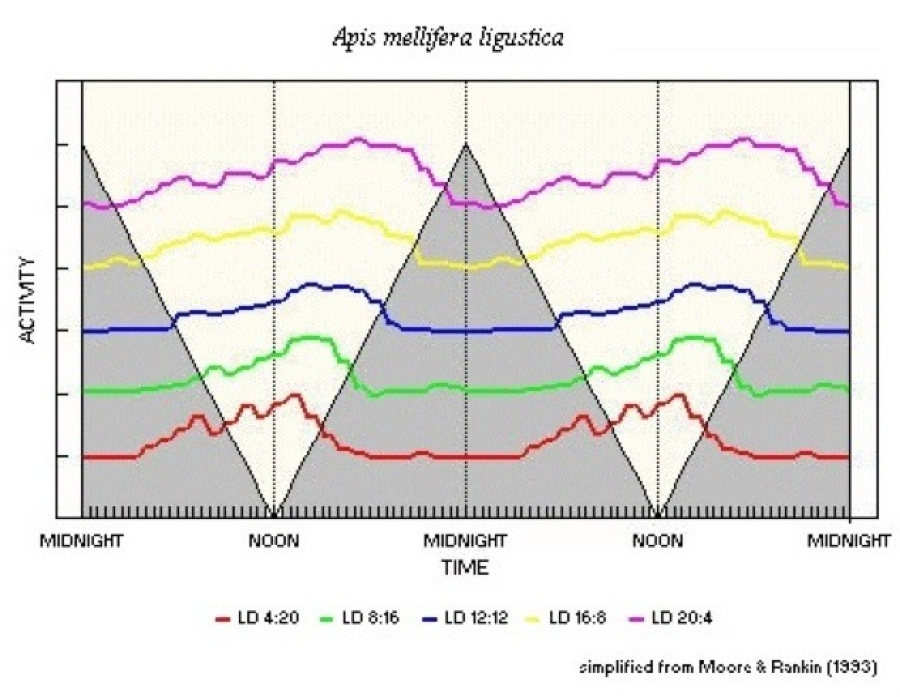

Biological Clocks in Mosquitoes
|
Moore & Rankin (1993) studied the honeybee, Apis mellifera ligustica, (from Austin, Texas, maximum LD 14:10). They used LD regimes from LD 4:20 to LD 22:2, and found a totally day-active pattern with a broad, almost flat, peak, somewhat skewed towards afternoon activity (redrawn as Figure 53, below). They denoted onset of activity and noted this appeared to follow light-off by some 10h. Their interpretation was that the main peak was entrained by the previous light-off. Their view did not embrace the evidence from long L regimes. In particular, they offered no explanation as to the strong evidence from LD 22:2, which clearly showed an early peak which appeared to be entrained to follow light-on by some 10-14h.
Figure 53 Photoperiodogram of the walking rhythm of honeybees, Apis mellifera ligustica, derived from Moore & Rankin (1993).

|
©1998, 2010 - Brian Taylor CBiol FSB FRES 11, Grazingfield, Wilford, Nottingham, NG11 7FN, U.K. Comments to dr.b.taylor@ntlworld.com |